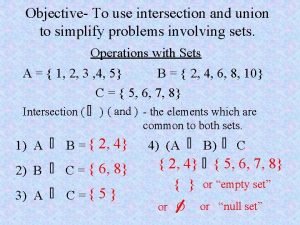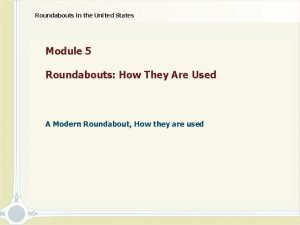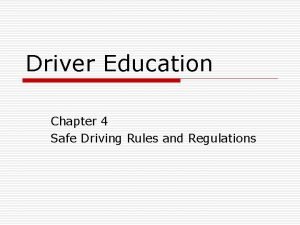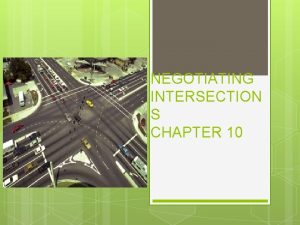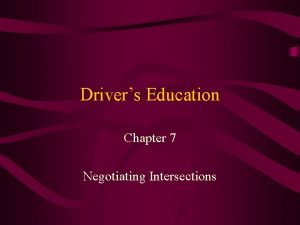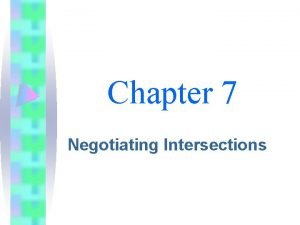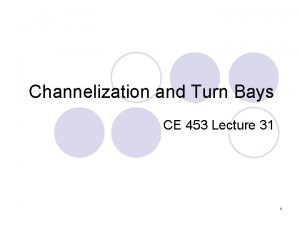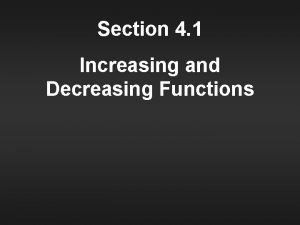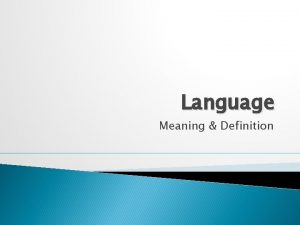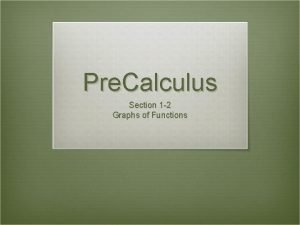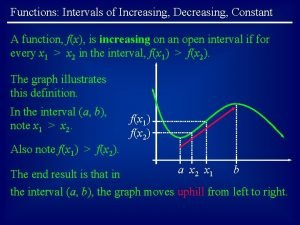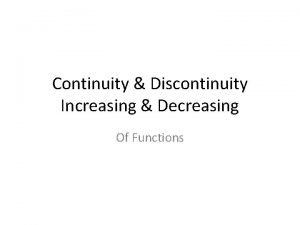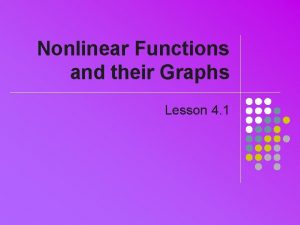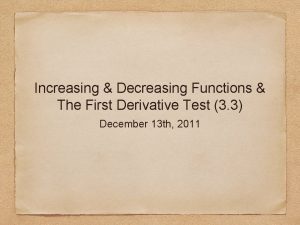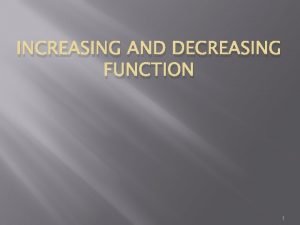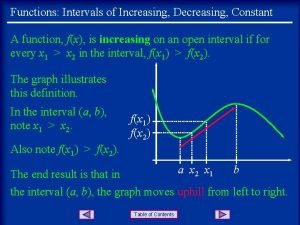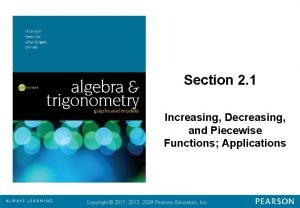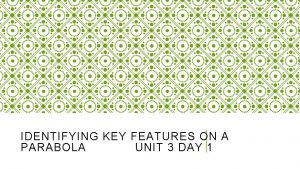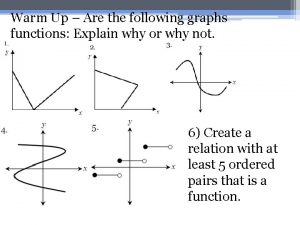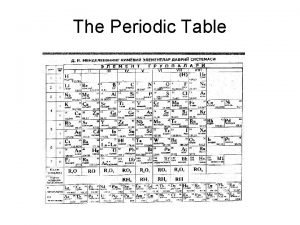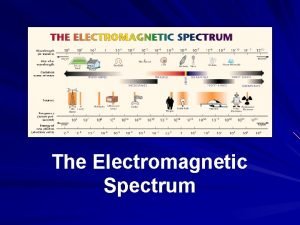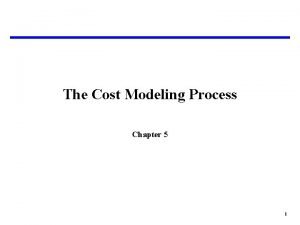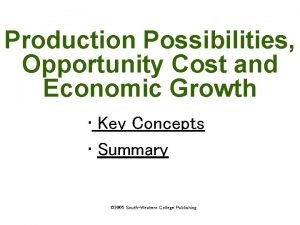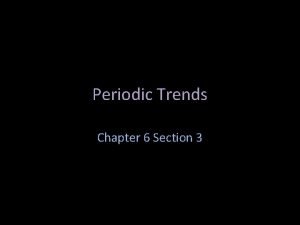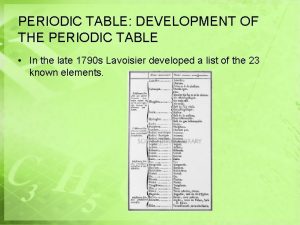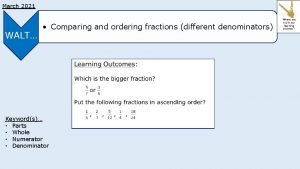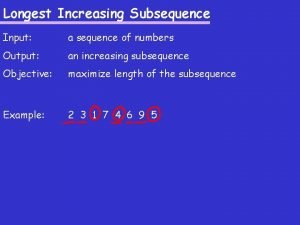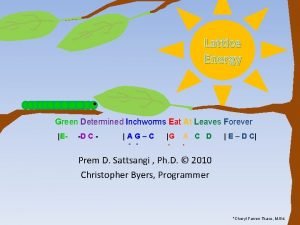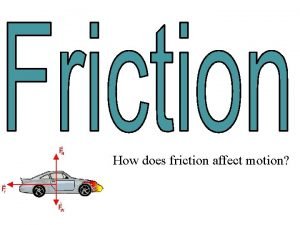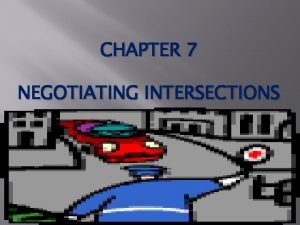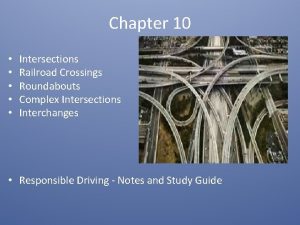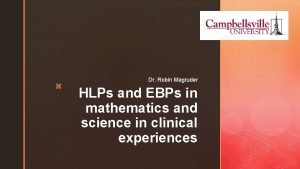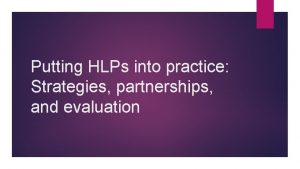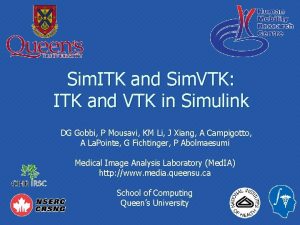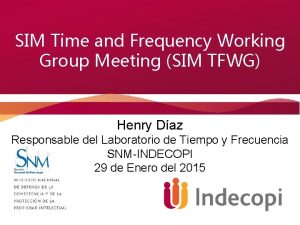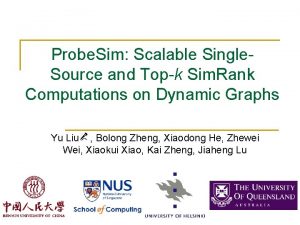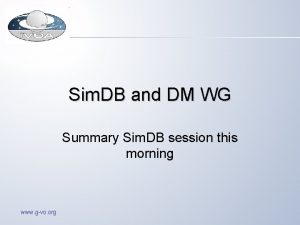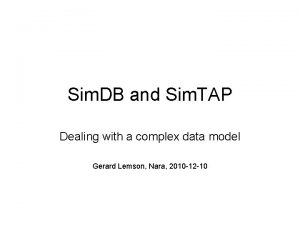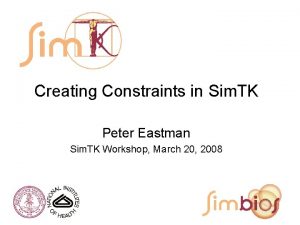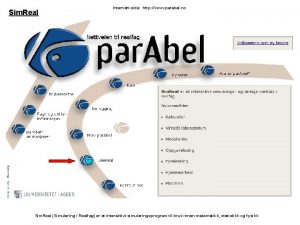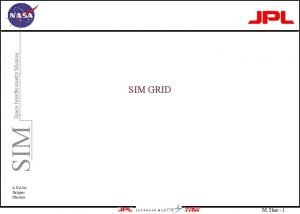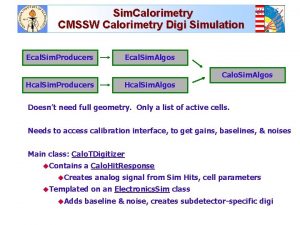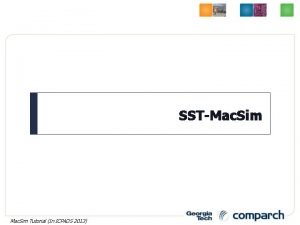The Intersections of SIM and HLPs Increasing the









































- Slides: 41

The Intersections of SIM and HLPs: Increasing the Power of Teachers and Teaching

Overview • What are HLPs and how do they connect with SIM? – Why these practices? – Why now? • How can SIM inform HLP work? • Why SIM and HLP work matters now more than ever.

The Intersections of SIM and HLPs: Increasing the Power of Teachers and Teaching • Distribution of Power in American Society (Talcott Parsons, 1960) – Distributive Power (power by ‘A’ over ‘B’) – Collective Power (power of ‘A’ and ‘B’ together)


By the numbers… • Approximately 57, 000 children and youth attend schools in the US; 78, 000 under the age of 18. – 6. 7 million receive special education services • Approximately 3, 800, 000 teachers teach them. – 270, 000 special educators

By the numbers… • Having a moderately effective to highly effective teacher has academic and financial implications. • Placement in the 83 rd percentile versus 29 th percentile in math. • Increased literacy attainment (Louden, et al. , 2005; Scott et al. , 2009) • Skillful implementation of SEL programs (Durlack et al. , 2011) – Have positive effects on targeted social-emotional competencies and attitudes about self, other, and school. – Lead to increased pro-social behavior – Reduce conduct and internalizing behavior – Improve academic achievement

By the numbers… • One year with a moderately effective teacher can increase the life-time earnings of an individual by $11, 000 (Hanushek, 2011). • A classroom of 25 students = $275, 000 • Ten years of teaching = $2, 750, 000; ten teachers = $20, 750, 000

3, 800, 000 moderately effective teachers over ONE year… $1, 045, 000, 000

Why are we not realizing our power?

Internal Barriers • We lack agreement on what skillful teaching is. • We use vague, casual language to describe teaching. • We allow others to believe that skillful teaching is innate. • We treat artfulness and skillfulness as dichotomies.

One Response: Evidence-Based Practices • Importance of using best available evidence in decision-making • Emerging from medicine in 1990 s as an approach to improve practice and reduce the research-topractice gap • Adopted by a variety of fields, including – General education (e. g. , What Works Clearinghouse, 2002) – Special education (e. g. , Odom et al. , 2005)

SIM Hits It Out of the Park!

Powerful Interventions & Approaches • Content Enhancement Routines – Cue, Do, Review • Learning Strategies – Instructional Model • • Community Building Series Social Skills Programs Proven Professional Development Model Network of Experts

WWC https: //ies. ed. gov/ncee/wwc/

Another Response: High-Leverage/Core Practices • Commonwealth Teacher Training Study (Charters & Waples, 1929) – 1001 items sorted into seven broach categories • Process-Product Researchers (Simon & Boyer, 1970; Anderson, Evertson, & Boyer, 1979) – 22 items focused on moves teachers should make in order to influence student learning. • Core Practices (Ball & Forzani, 2009; Fogo, 2012; Grossman, Hammerness, Mc. Donald, 2009) – Various items connected to general and discipline-specific teaching following specific criteria.

High-Leverage/Core Practices • Basic fundamentals of teaching • Used daily or almost daily by teachers • Critical in helping students to learn content or skills • Used across content areas, grade levels, and contexts • Consequential for student learning • Basic for advancing skill in teaching • Fundamental to many different curricula or approaches to teaching • Teaching. Works. org

HLPs are Work Teachers Do What are they not? – Knowledge – Beliefs – Orientations – Student activities (e. g. “project-based learning”) – Learning goals for students (e. g. , “identifying similarities and differences”) – Scripted teacher curricula – Devoid of professional judgement or context

CEC/CEEDAR High-Leverage Practices • What every special educator needs to know on Day 1! • 22 HLPs • Collaboration • Assessment • Social/emotional/behavioral • Instruction

Special Education HLPs • Collaboration – Ex. Collaborate with families to support student learning and secure needed services • Assessment – Ex. Use student assessment, analyze instructional practices, and make necessary adjustments that improve student outcomes. • Social/Emotional/Behavioral – Ex. Provide positive and constructive feedback to guide students’ learning and behavior • Instruction – Ex. Use strategies to promote active student engagement

High-leverage Practices Teaching. Works at the University of Michigan - Teaching. Works. org 1. Leading a group discussion 11. Talking about a student with parents or other caregivers 2. Explaining and modeling content practices, and strategies 12. Learning about students’ cultural, religious, family, intellectual, and personal experiences and resources for use in instruction 3. Eliciting and interpreting individual students’ thinking 13. Setting long- and short-term learning goals for students 4. Diagnosing particular common patterns of student thinking and development in a subject matter domain 14. Designing single lessons and sequences of lessons 5. Implementing norms and routines for classroom discourse and work 15. Checking student understanding during and at the conclusion of lessons 6. Coordinating and adjusting instruction during a lesson 16. Selecting and designing formal assessments of student learning 7. Specifying and reinforcing productive student behavior 17. Interpreting the results of student work, including routine assignments, quizzes, tests, projects, and standardized assessments 8. Implementing organizational routines 18. Providing oral and written feedback to students 9. Setting up and managing small group work 19. Analyzing instruction for the purpose of improving it 10. Building respectful relationships with students

Unpacking the practice of leading a group discussion In a group discussion, the teacher and all of the students work on specific content together, using one another’s ideas as resources. The purposes of a discussion are to build collective knowledge and capability in relation to specific instructional goals and to allow students to practice listening, speaking, and interpreting. The teacher and a wide range of students contribute orally, listen actively, and respond to and learn from others’ contributions.

Examining one beginner’s practice

Leading a group discussion • How do we often see this practice enacted in classrooms? • How would we like to see it enacted? • Why does skilled enactment of the practice matter for advancing equity and justice?

Equity is a matter of degree: Classrooms are more or less equitable. (Cohen & Lotan, 1997)

• Cohen and Lotan argue, amongst other things that interaction between students is the key to changing the inevitable structure that will naturally happen in a classrooms.

WHAT IS A DECOMPOSITION? A careful unpacking of a teaching practice into chunks or elements that can be taught helpfully to novices. This is what we do when we teach anything –– writing an introductory paragraph, using primary sources, setting up an experiment! But often have not done in teaching…

Why decompose practices? • Critical for teaching • Learnable and assessable Begin with practices Decompose the practices • Develop skill with the components of the practice(s) • Work on components in isolation or in different combinations • Support work on the practice as a whole • Support work on bundles of practices together Recompose the practices Goal: Increase the complexity of the work so that beginners are practicing the full work of teaching

Decomposing leading a group discussion Discussion Enabling • • Selecting a task Anticipating student thinking Setting up the task Monitoring student work Discussion Leading Framing -Launching Orchestrating - Eliciting - Probing - Orienting - Making contributions Recording and representing content Maintaining a focus on the instructional point Seeing and disrupting patterns that reproduce inequity Framing - Concluding

Ericssson, A. & Pool, R. (2016). Peak: Secrets from the new science of expertise. New York: Houghton Mifflin Harcourt. “. . . if there is no agreement on what good performance is and no way to tell what changes would improve performance, then it is very difficult -- often impossible -- to develop effective training methods. ”

Let’s take a deeper dive • Setting up and managing small group work • Use flexible group work

HLP # 9: Setting Up and Managing Small Group Work Teachers use small group work when instructional goals call for in-depth interaction among students and in order to teach students to work collaboratively. To use groups effectively, teachers choose tasks that require and foster collaborative work, issue clear directions that permit groups to work semi-independently, and implement mechanisms for holding students accountable for both collective and individual learning. They use their own time strategically, deliberately choosing which groups to work with, when, and on what.

HLP # 17: Use flexible grouping Teachers assign students to homogeneous and heterogeneous groups based on explicit learning goals, monitor peer interactions, and provide positive and corrective feedback to support productive learning. Teachers use small learning groups to accommodate learning differences, promote in-depth academic-related interactions, and teach students to work collaboratively. They choose tasks that require collaboration, issue directives that promote productive and autonomous group interactions, and embed strategies that maximize learning opportunities and equalize participation. Teachers promote simultaneous interactions, use procedures to hold students accountable for collective and individual learning, and monitor and sustain group performance through proximity and positive feedback.

Setting and Starting Up Managing and Wrapping Up Preparing for Group Work Monitoring Small Group - Identify a learning goal appropriate for group work - Plan the learning activity - Decide on grouping model - Consider space - Define roles - Prepare instructional and assessment materials Launching Group Work - State the learning goal - - Review group norms and expectations Provide clear directions (check for understanding; explain and model as needed) Give students option for what to do if they finish early Coach students on what to do if they need help Transition to small groups - Wrapping Up Small Group Ensure norms & routines are followed Encourage all students’ participation Probe or support as needed Provide time cues Check in with each group Transition to whole group Noticing Student Contributions - Record student thinking Monitor individual participation Monitor group dynamics Provide positive & constructive feedback Focusing on the learning goal Wrapping Up Whole Group - Conclude and summarize Provide feedback on group work Allow for group and self-reflection

Flexible Group Work Planning Work Launching Work Grouping Work Preparing for Group Work - - - Select a Grouping Model(s) - -Whole Group, break out - -Small Group, teacher led - -Learning Centers - -Multiple Small Groups - -Ongoing Rotations - -Other - Identify a learning goal(s) based on evidence or IEP goals - -Plan the learning activity(ies) - -Decide on grouping model - -Complete environmental mapping - -Define roles if appropriate - -Prepare instructional & assessment materials Considerations: - Review and model group norms and expectations Provide clear directions (check for understanding; explain and model as needed) Give students option for what to do if they finish early Coach students on what to do if they need help Transition to small groups Personally connect with all students State learning objective and rationale Access prior knowledge Provide scaffolded instruction Engage all learners Check for understanding Monitor all learners Provide feedback Monitor transitions Promote student strengths Summarize & Conclude

How can SIM Inform HLP work? - Locate which HLPs underlie strategies, routines, programs, etc. ? - Provide feedback on and support of HLP enactment?

So what’s so important to understand about this information? • Realizing our power: – Work together toward agreement on what skillful teaching is and requires. – Use precise, professional, common language to describe our work. – Inform the world that skillful teaching is unnatural and extremely complex. – Recognize that artists and experts are highly skilled.

So what’s so important to understand about this information? • Over the next 3 -5 years, 1. 5 million new teachers will begin their careers. • A majority of these new teachers will work in low resourced, high poverty settings.

The Achievement Gap Between the Rich and the Poor (Reardon, 2012) • Has the relationship between family socioeconomic characteristics and academic achievement changed during the last fifty years? • Yes • It’s widened. • “The achievement gap between children from highand low-income families is roughly 40 percent larger among children born in 2001 than among those born twenty-five years earlier. ”

Fifty-seven million lives depend on it! Thank you so much. Questions?

Please go to the link below to evaluate this session: https: //www. surveymonkey. com/r/2019 SIMposium Or scan the Evaluation barcode (also found on your SIM Conference Program)

KUCRL History Trivia Answers and WINNERS!!! In what year was the KU Center for Research on Learning founded? 1978 What are the names of the two Reading Programs developed by KUCRL? Fusion Reading & Xtreme Reading How Enhancement Routines areare there? 17 Howmany. SIM™Content Enhancement Routines there? 17 Which was the first Content Enhancement Routine written by the KU Center for Research on Learning? Concept Mastery Routine (1993) Which was the first Learning Strategy written by the KU Center for Research on Learning? The first published strategy was the Paraphrasing Strategy (1984). The first researched strategy was the Sentence Writing Strategy, in the late 1970 s, but it wasn’t published until 1985. How many SIM™ Learning Strategies are there? 56
 Module 5 drivers ed virginia
Module 5 drivers ed virginia How to simplify unions and intersections
How to simplify unions and intersections Module 5 intersections and roundabouts
Module 5 intersections and roundabouts Controlled uncontrolled and blind intersections
Controlled uncontrolled and blind intersections Chapter 10 negotiating intersections
Chapter 10 negotiating intersections A controlled railroad crossing is identified by
A controlled railroad crossing is identified by At an open or uncontrolled intersection, yield if _____.
At an open or uncontrolled intersection, yield if _____. Bay taper
Bay taper An uncontrolled railroad crossing usually has
An uncontrolled railroad crossing usually has Chapter 7 negotiating intersections
Chapter 7 negotiating intersections Classify each decreasing function as having a slope
Classify each decreasing function as having a slope What is ordinary language
What is ordinary language How to find increasing and decreasing intervals on a graph
How to find increasing and decreasing intervals on a graph Decreasing intervals
Decreasing intervals Decreasing intervals
Decreasing intervals Britain diamond mining and increasing labour control
Britain diamond mining and increasing labour control Lesson 4 increasing and decreasing functions
Lesson 4 increasing and decreasing functions Lesson 5 increasing and decreasing functions
Lesson 5 increasing and decreasing functions Strictly increasing and decreasing functions
Strictly increasing and decreasing functions Increasing and decreasing intervals
Increasing and decreasing intervals Increasing and decreasing piecewise functions
Increasing and decreasing piecewise functions Increasing and decreasing recipes
Increasing and decreasing recipes Intervals of a parabola
Intervals of a parabola White tiger population graph
White tiger population graph How to arrange elements in increasing atomic size
How to arrange elements in increasing atomic size Electromagenetic spectrum
Electromagenetic spectrum Increasing at a decreasing rate
Increasing at a decreasing rate Increasing friction
Increasing friction The law of increasing opportunity costs states that
The law of increasing opportunity costs states that Increasing atomic size
Increasing atomic size Atomic radius of elements
Atomic radius of elements Whats atomic radius
Whats atomic radius How to arrange elements in increasing atomic size
How to arrange elements in increasing atomic size Decreasing electronegativity
Decreasing electronegativity Putting fractions in order
Putting fractions in order Longest increasing subsequence
Longest increasing subsequence How does lattice energy increase on the periodic table
How does lattice energy increase on the periodic table Friction
Friction The process of increasing in physical size.
The process of increasing in physical size. Thermal decomposition of group 1 nitrates
Thermal decomposition of group 1 nitrates Em waves in order of increasing frequency
Em waves in order of increasing frequency Speed and velocity venn diagram
Speed and velocity venn diagram

